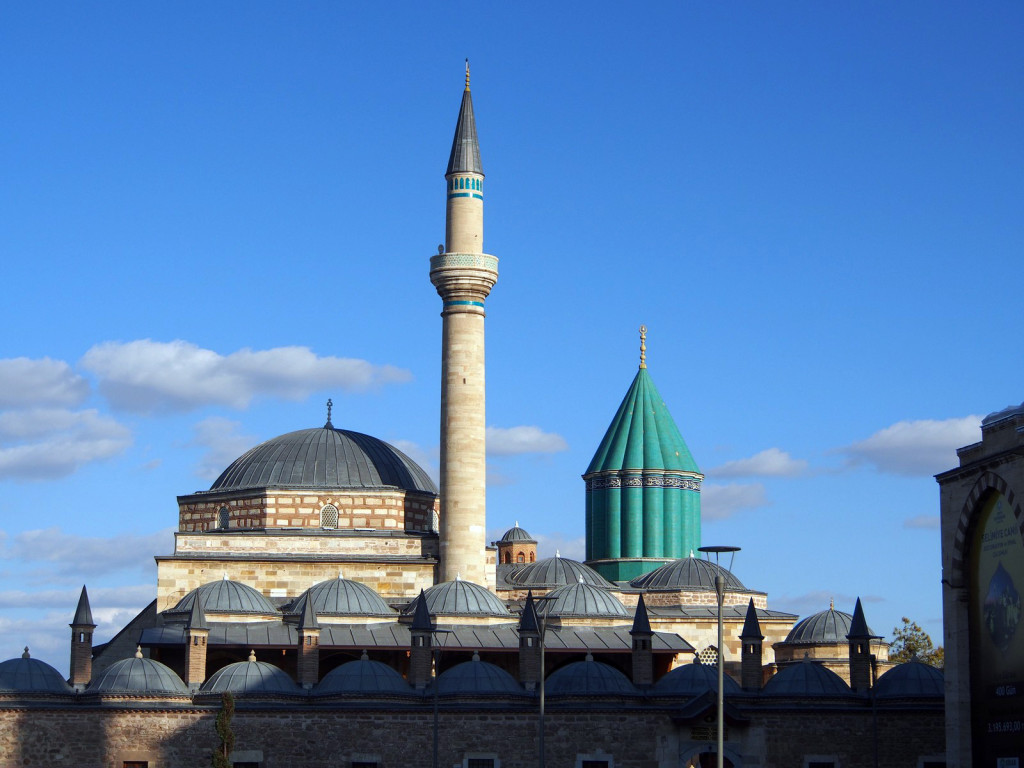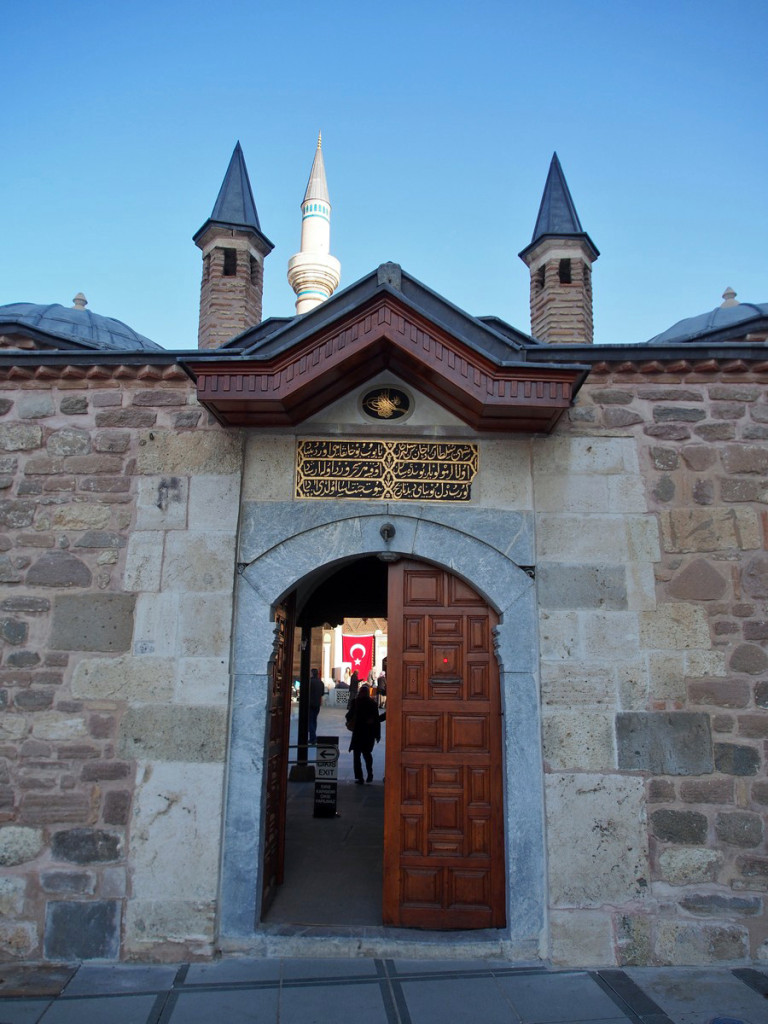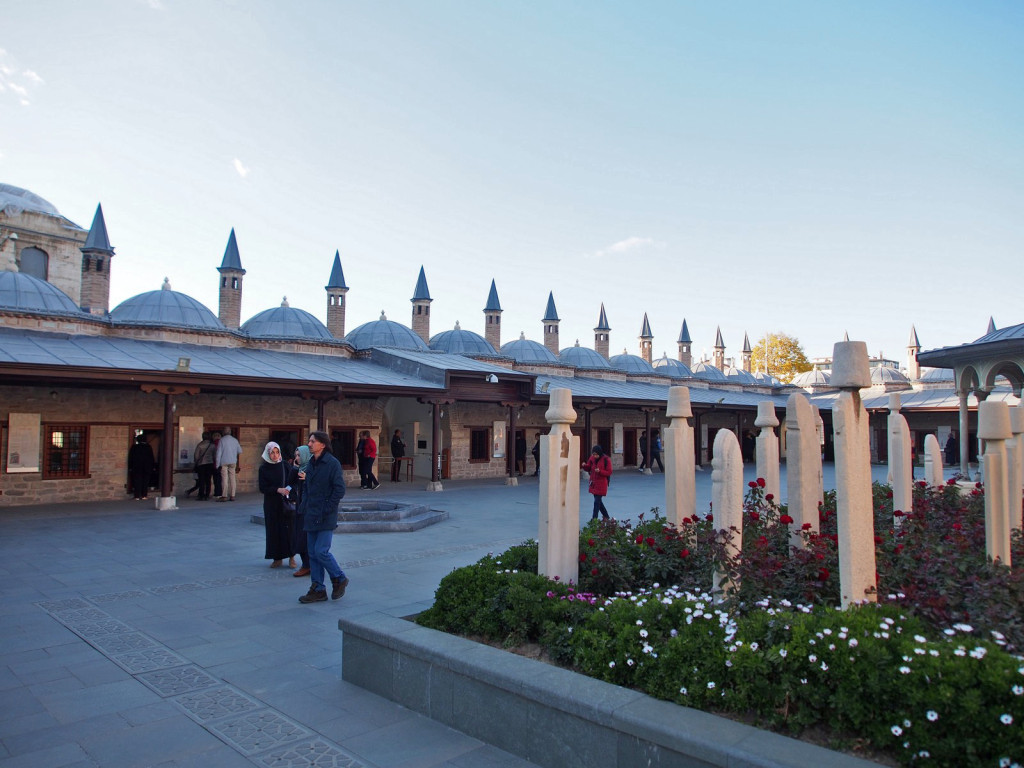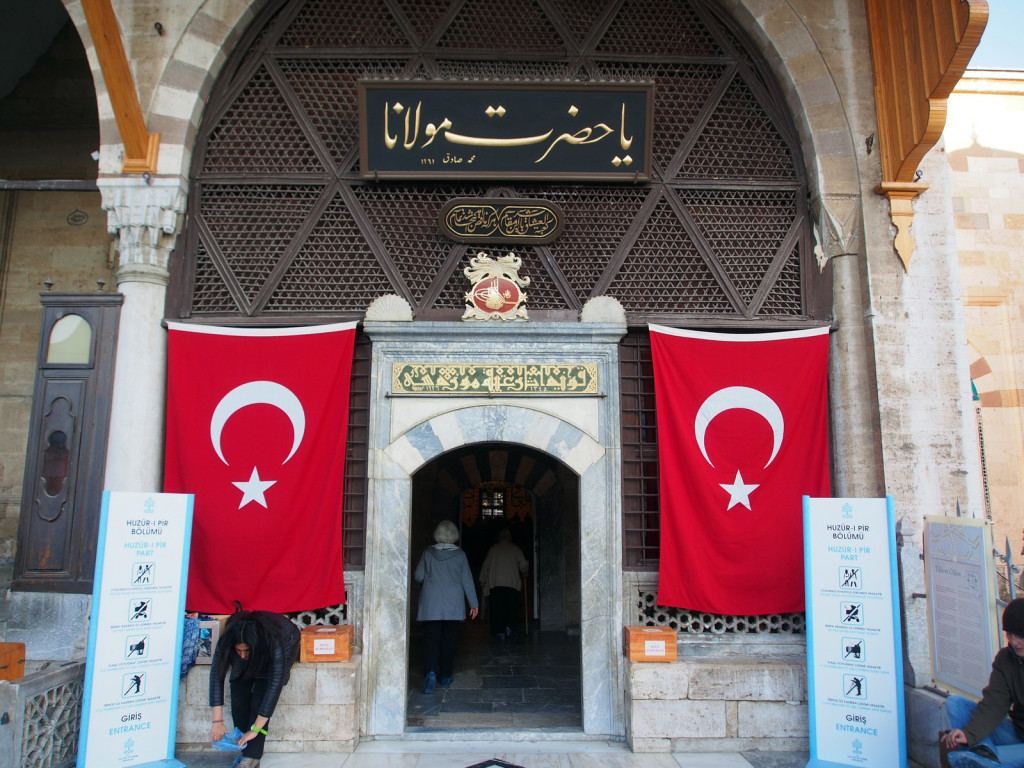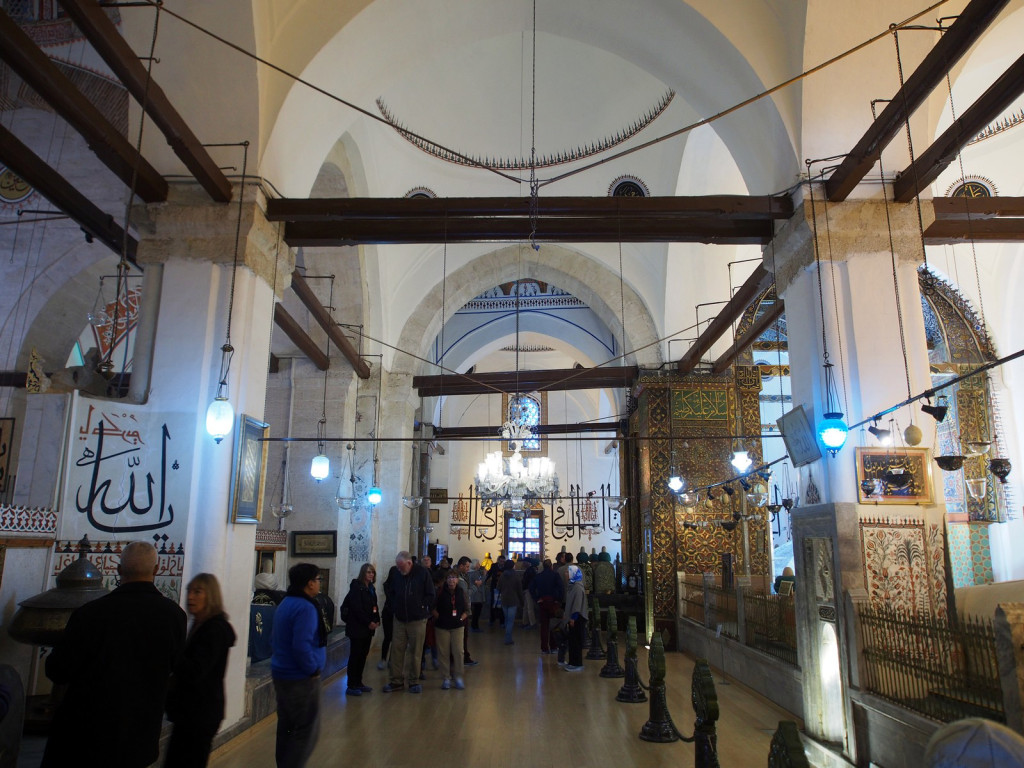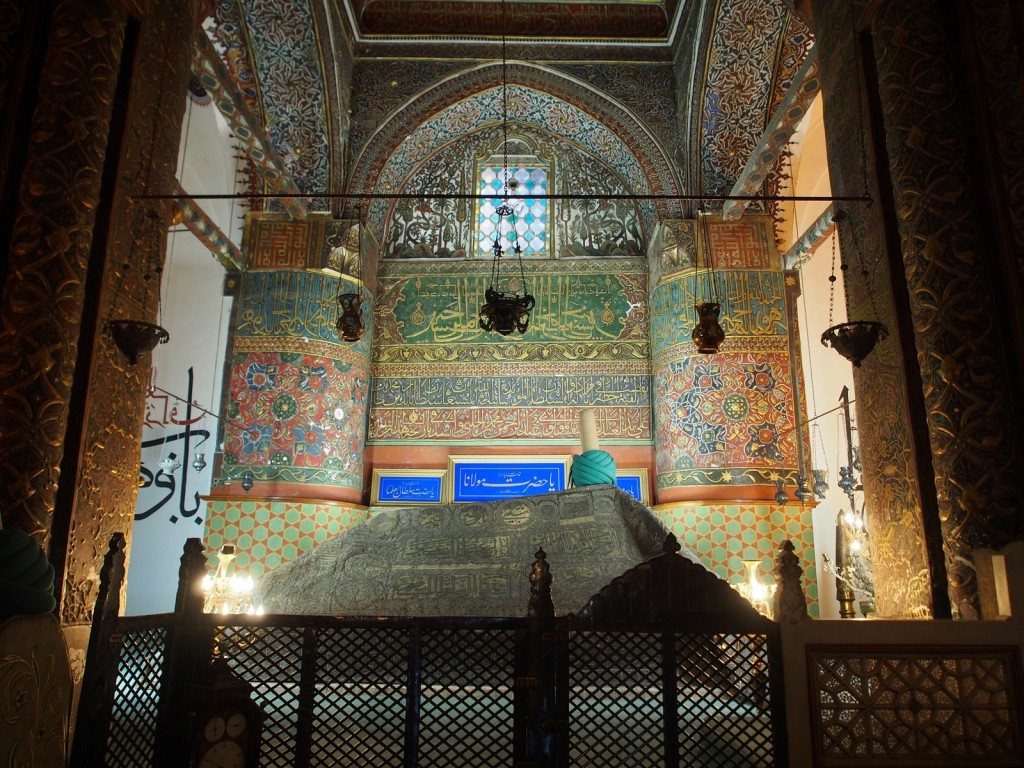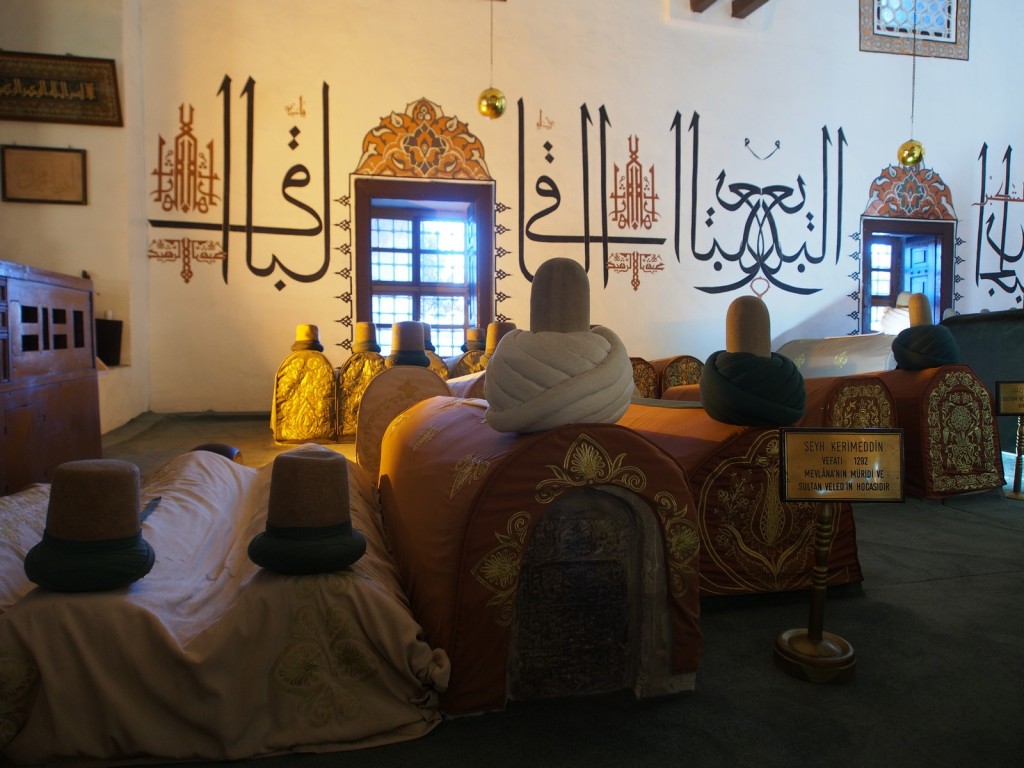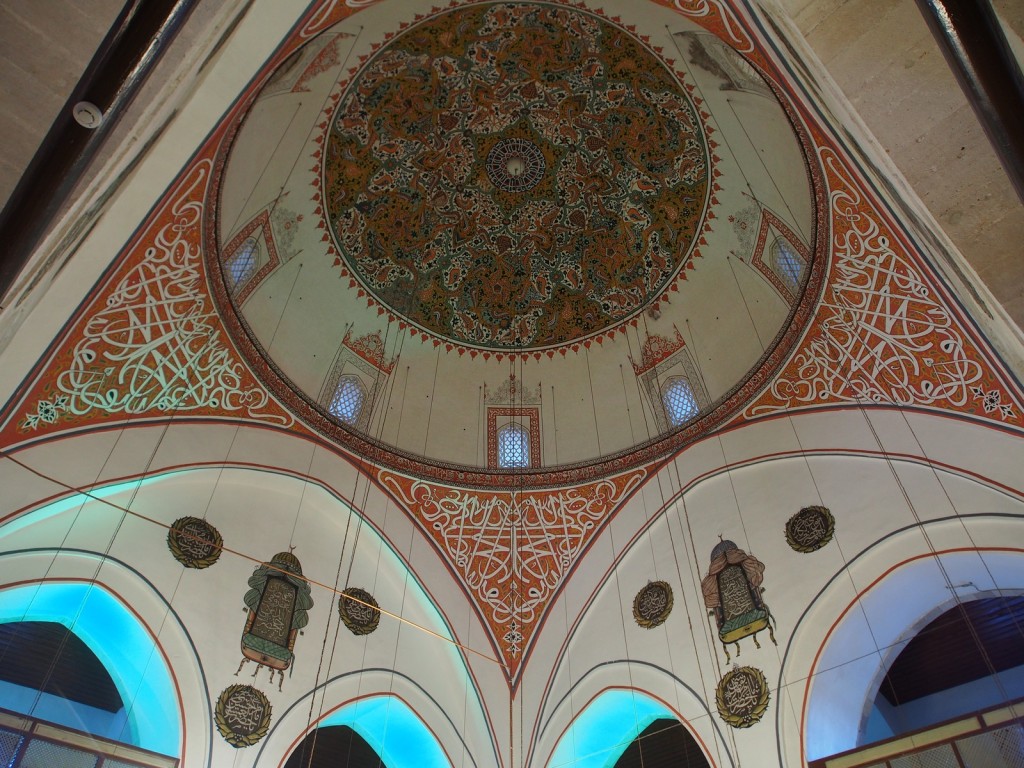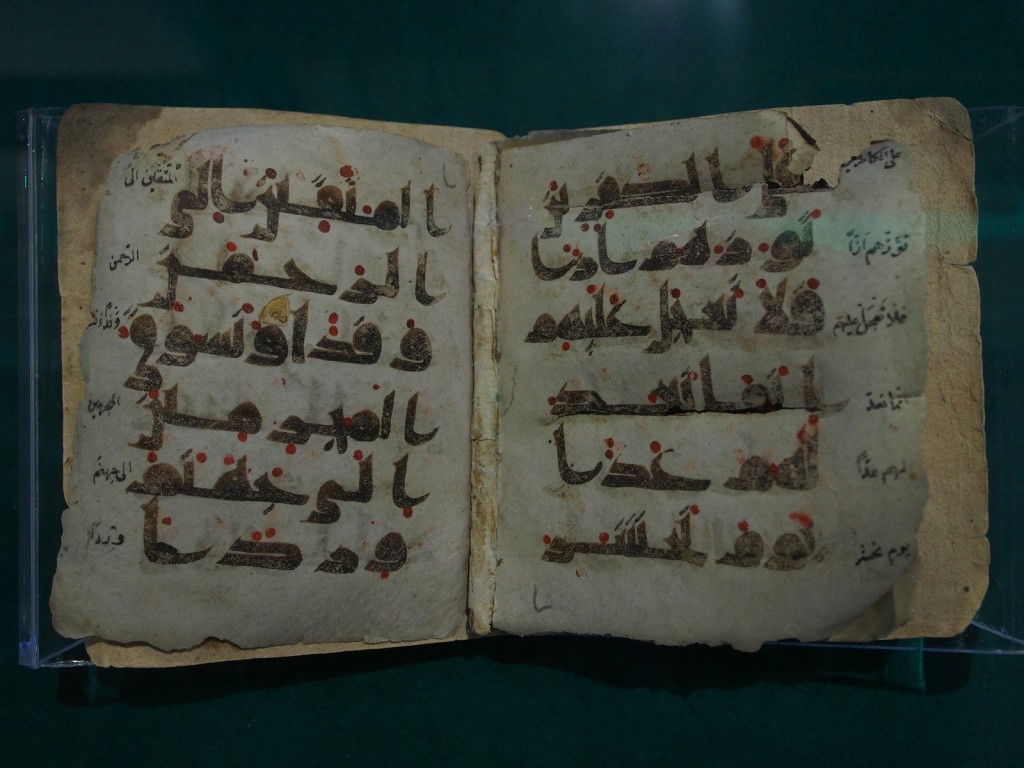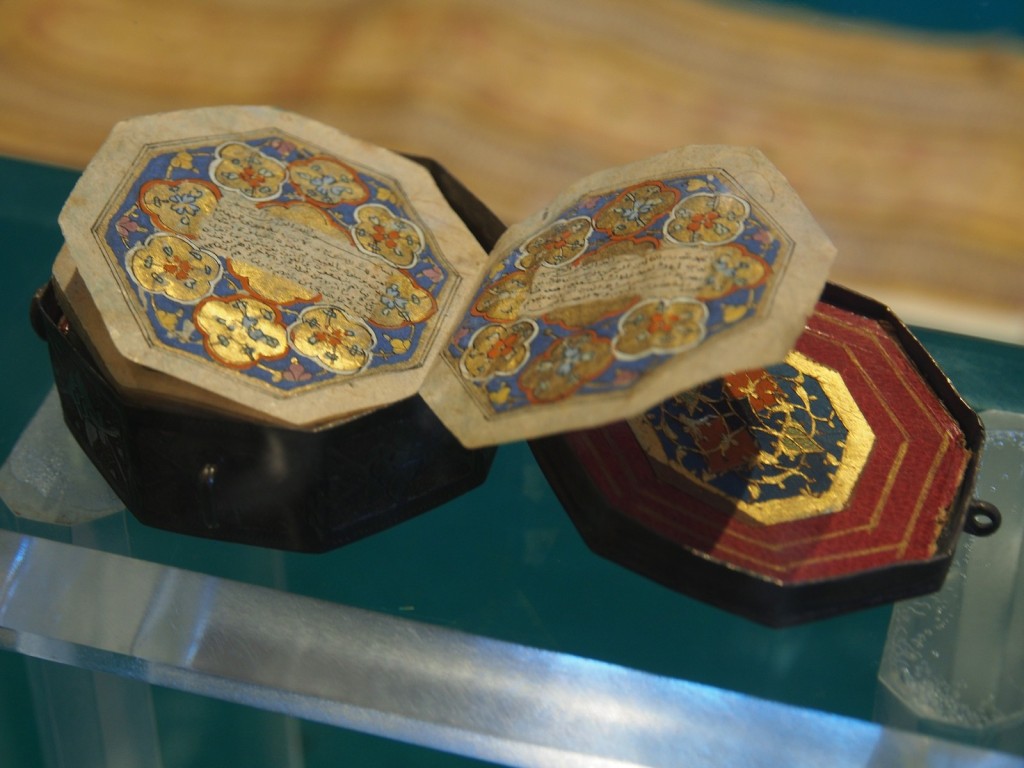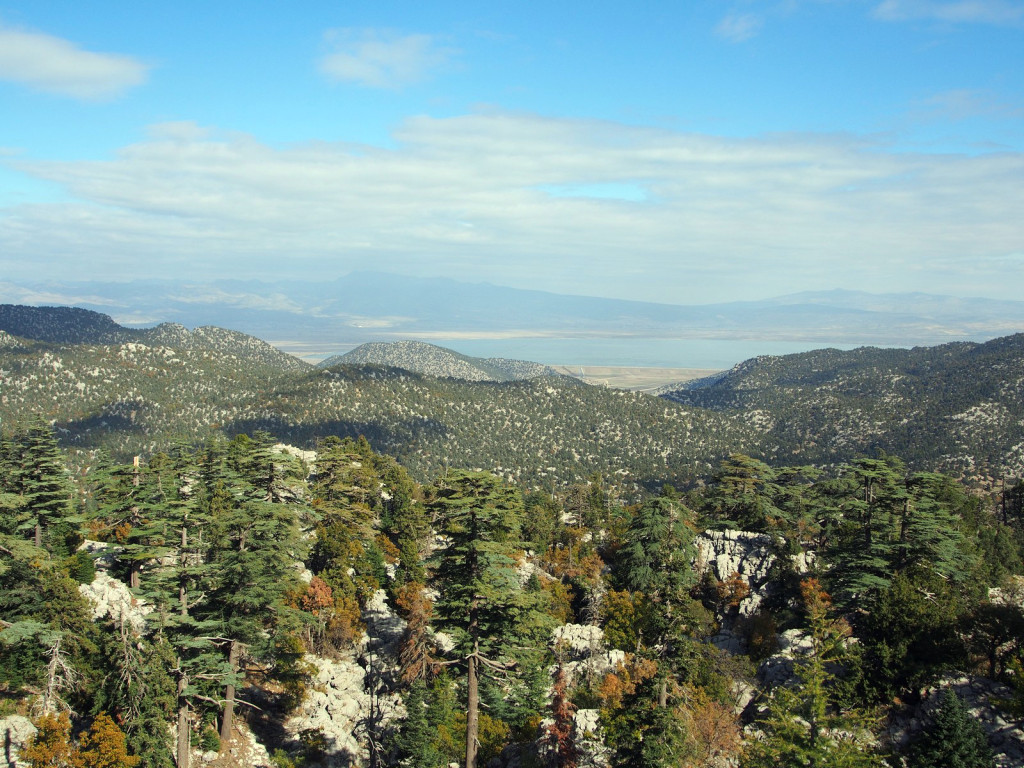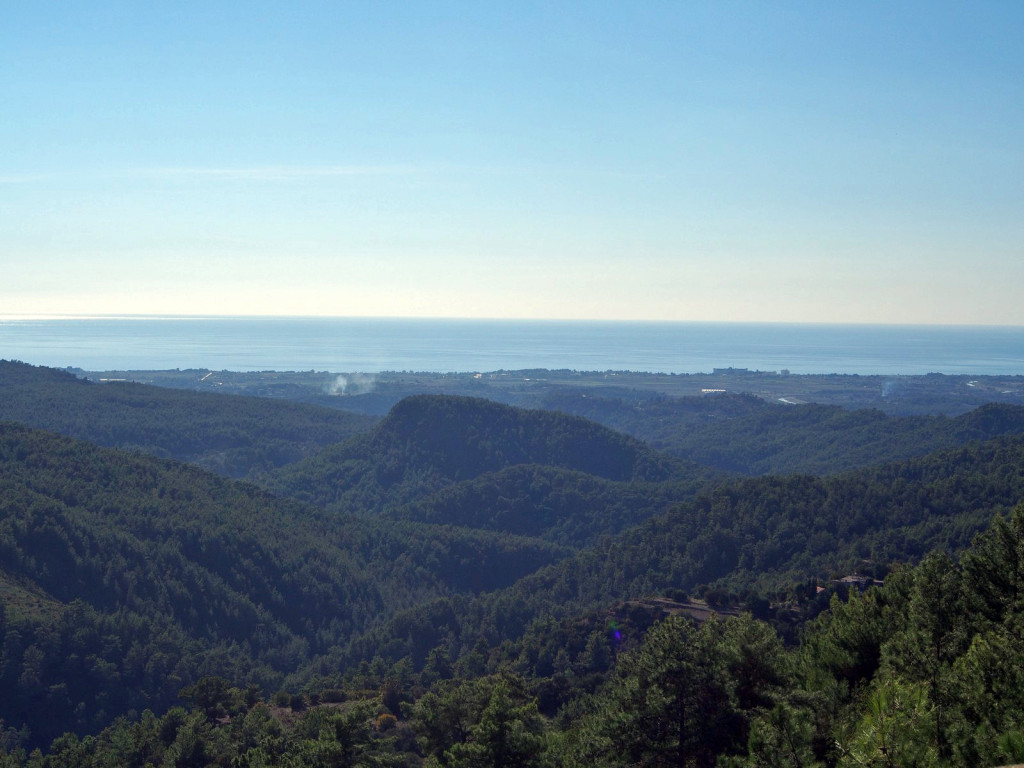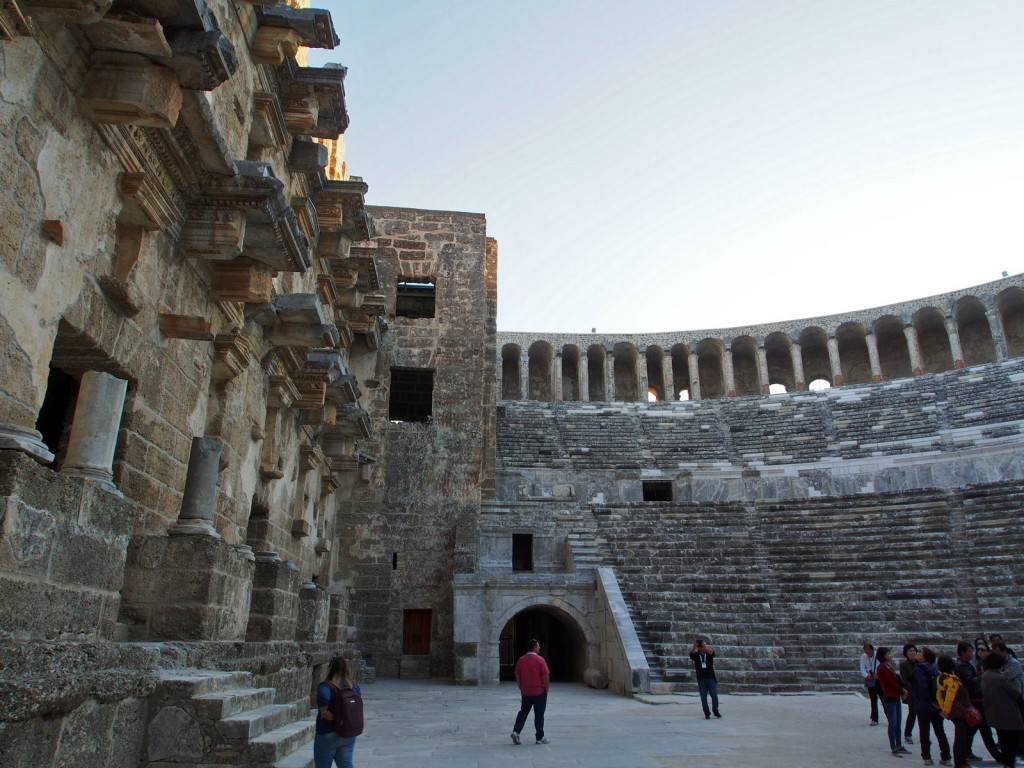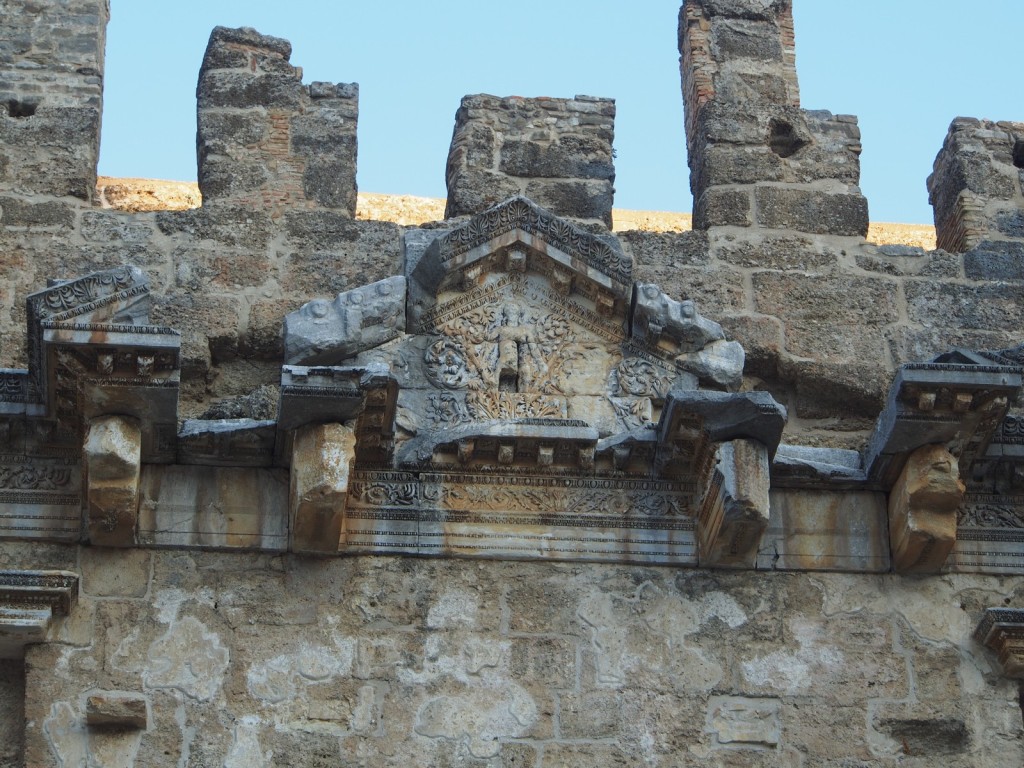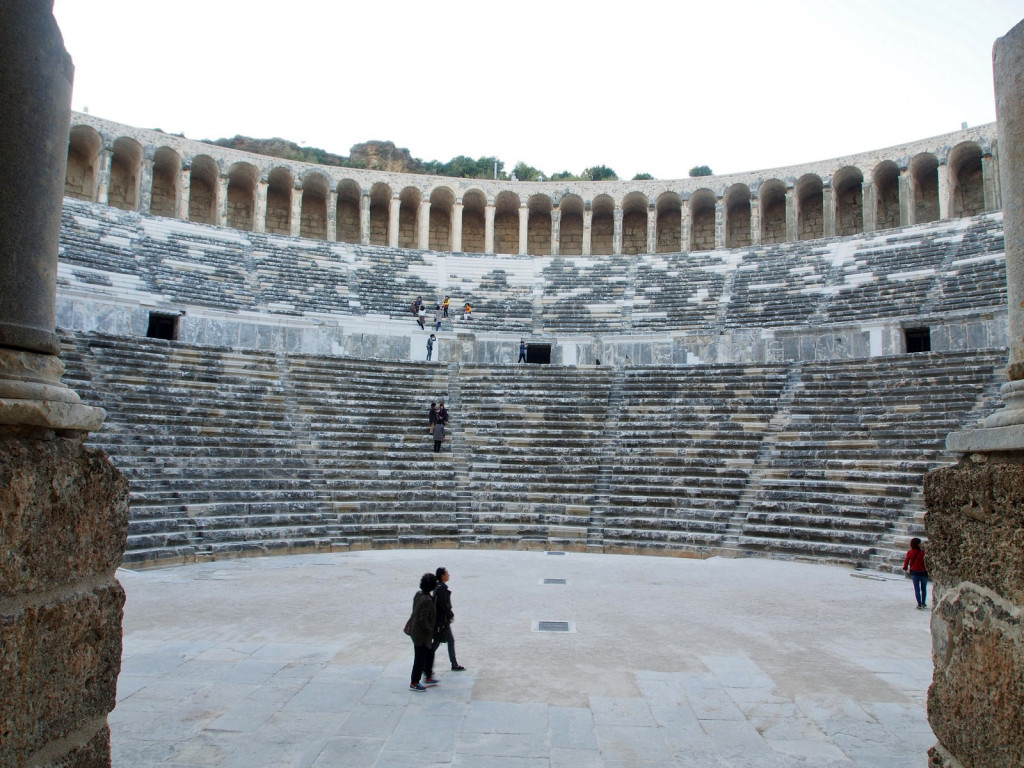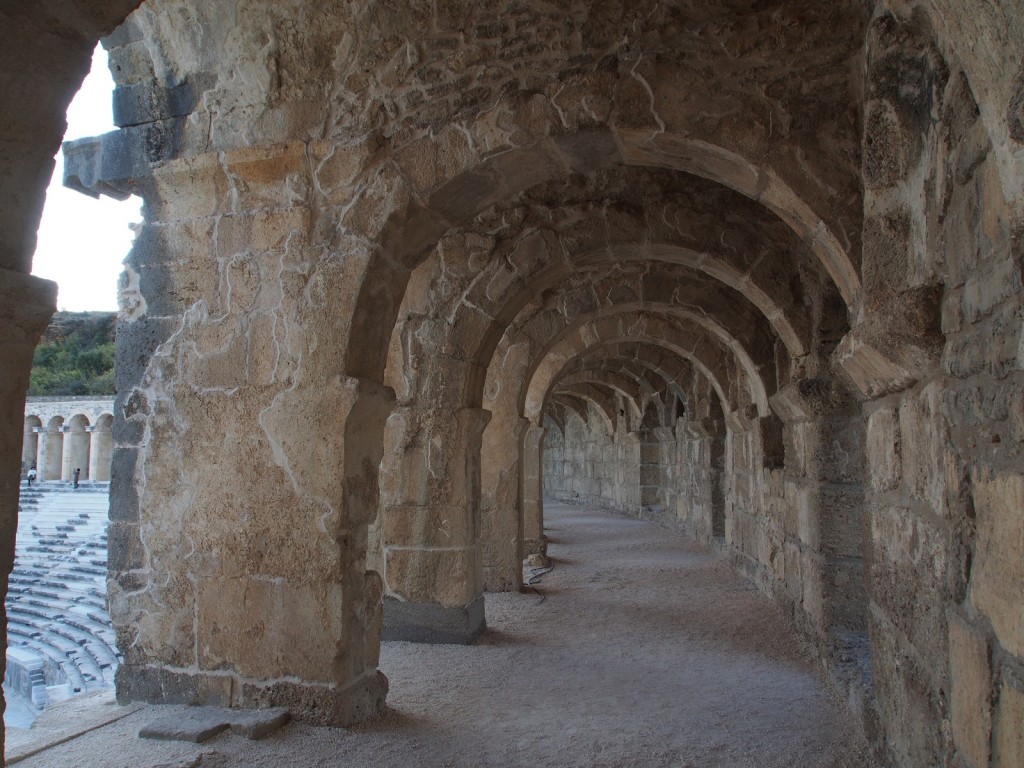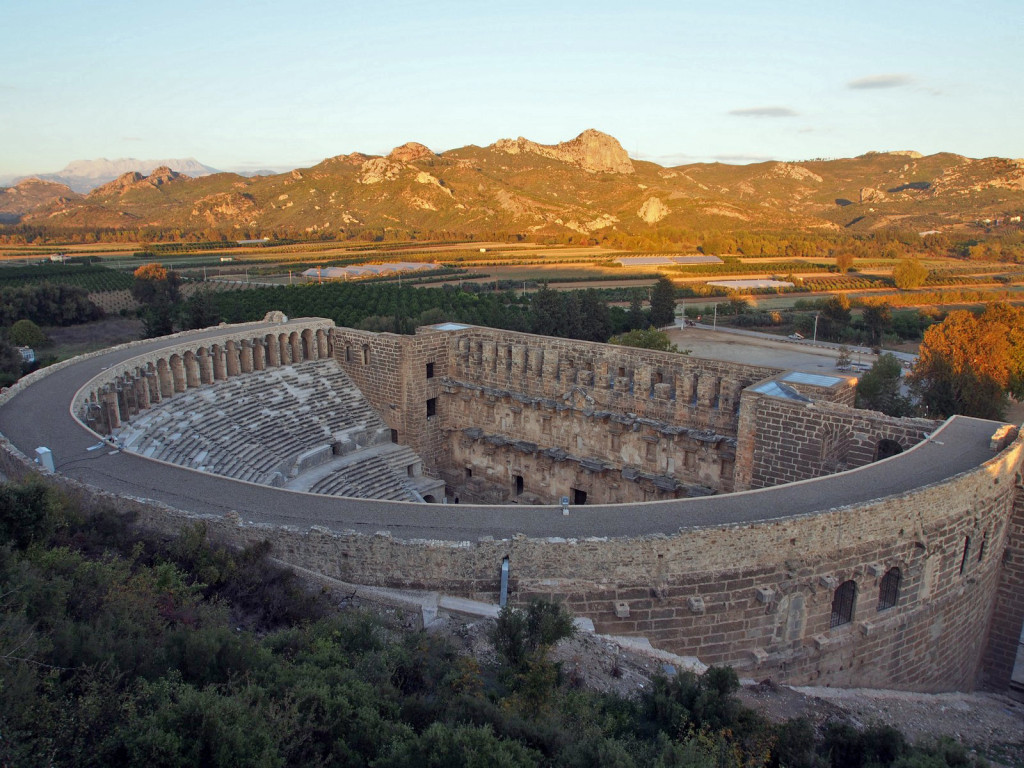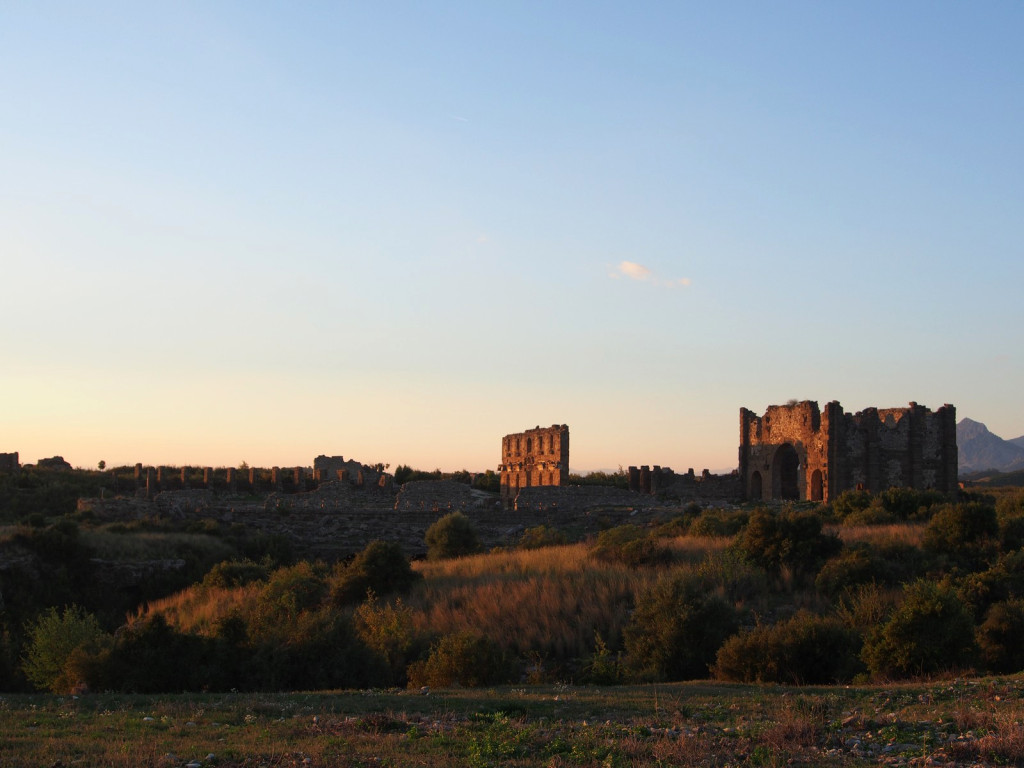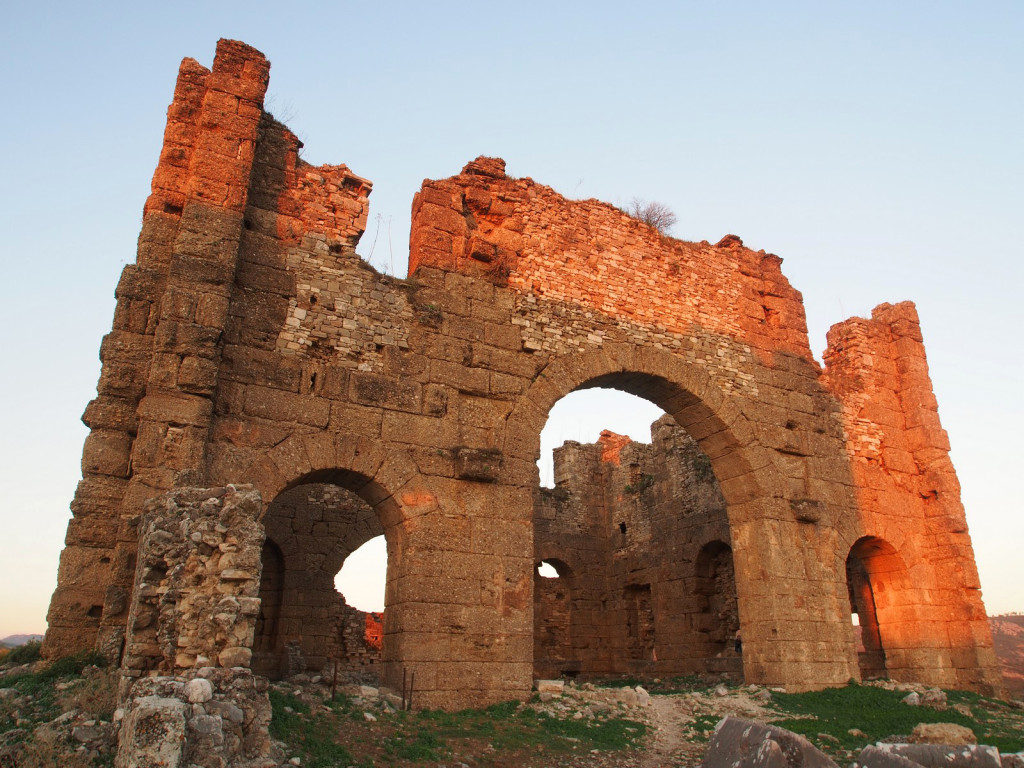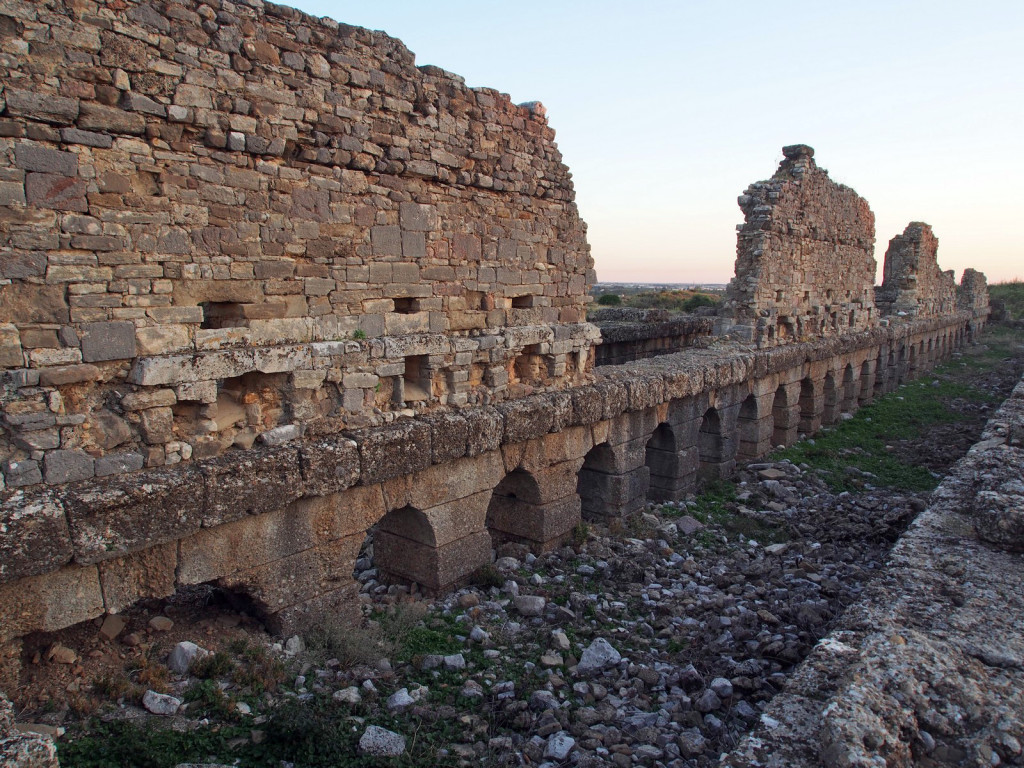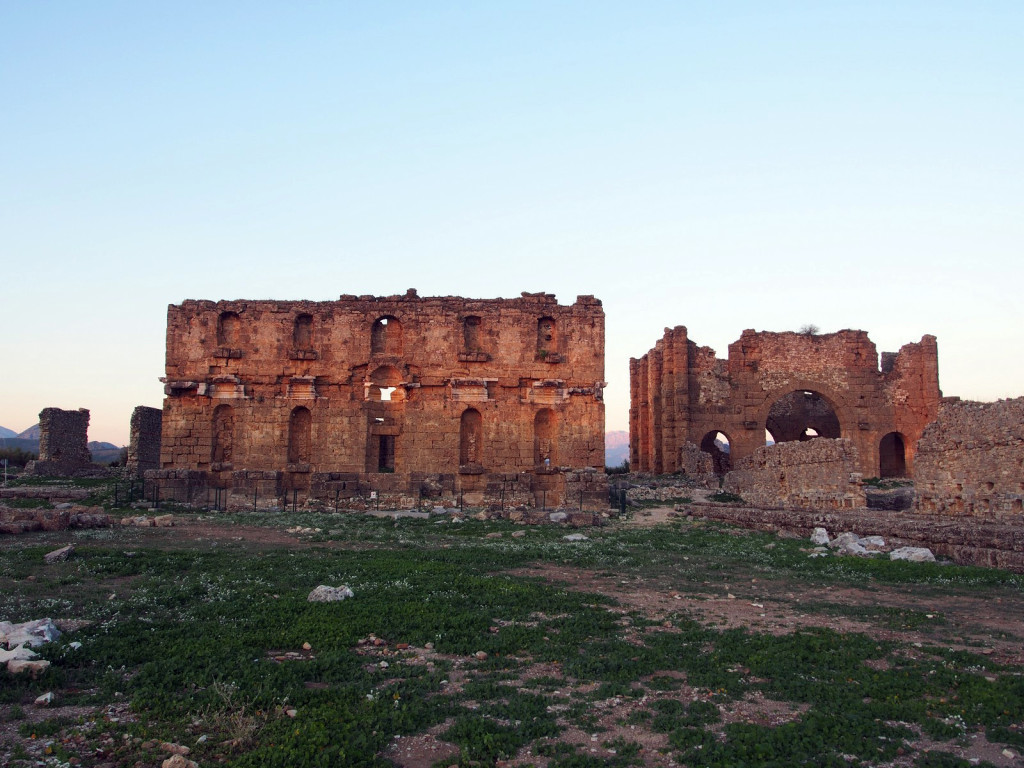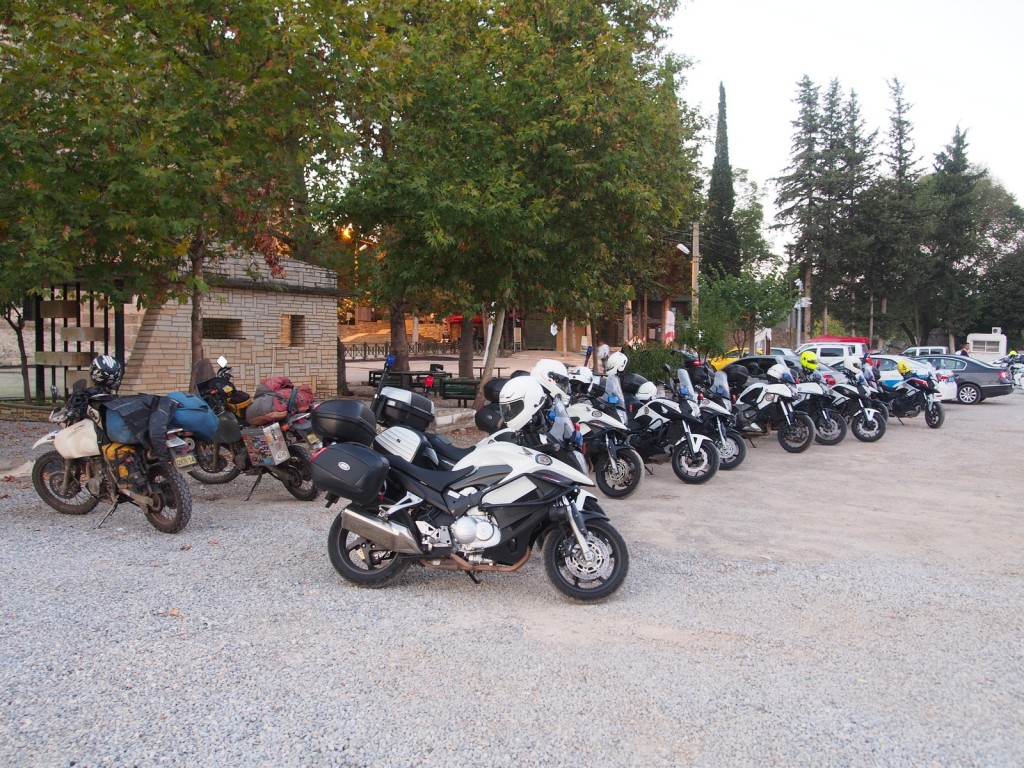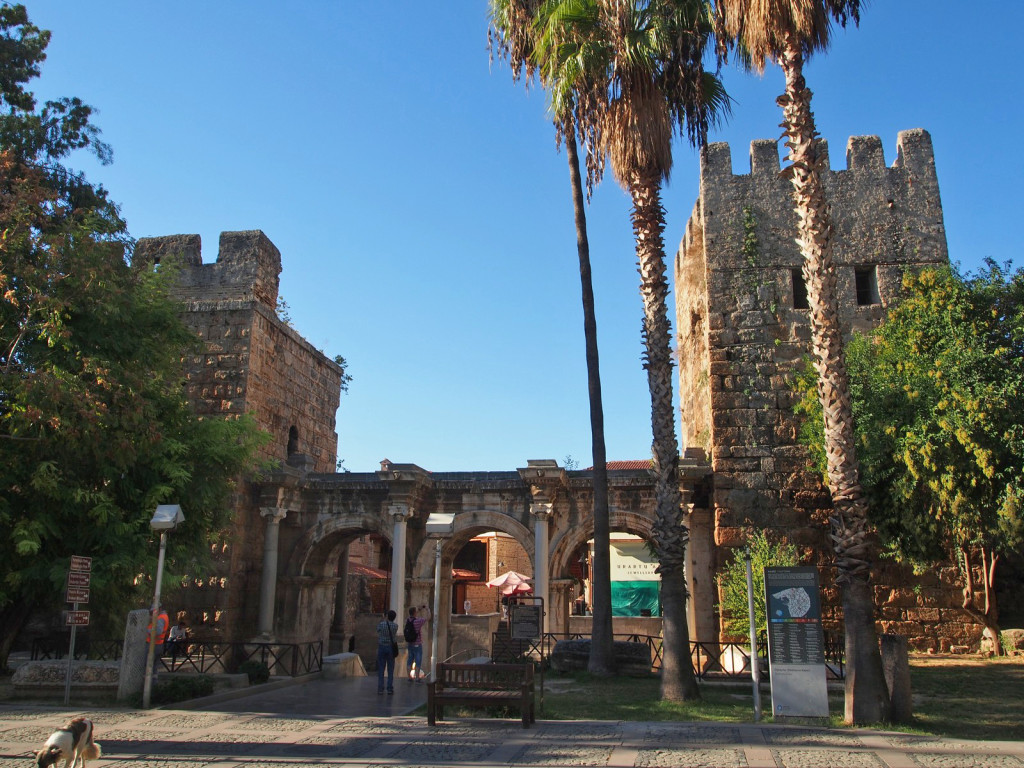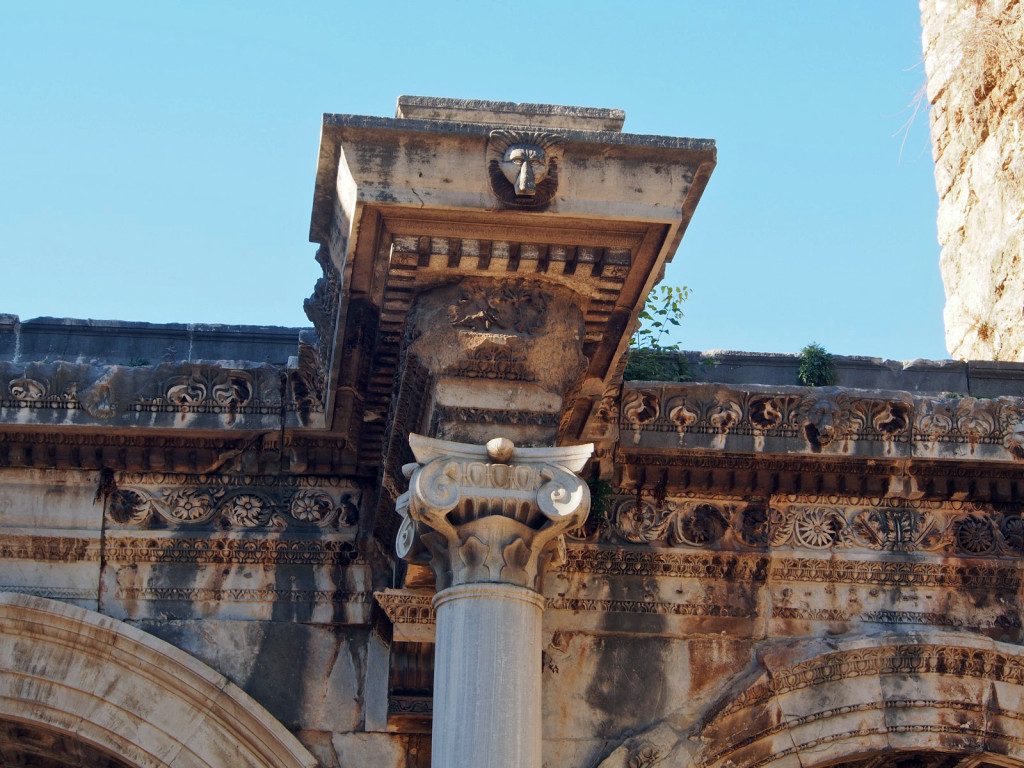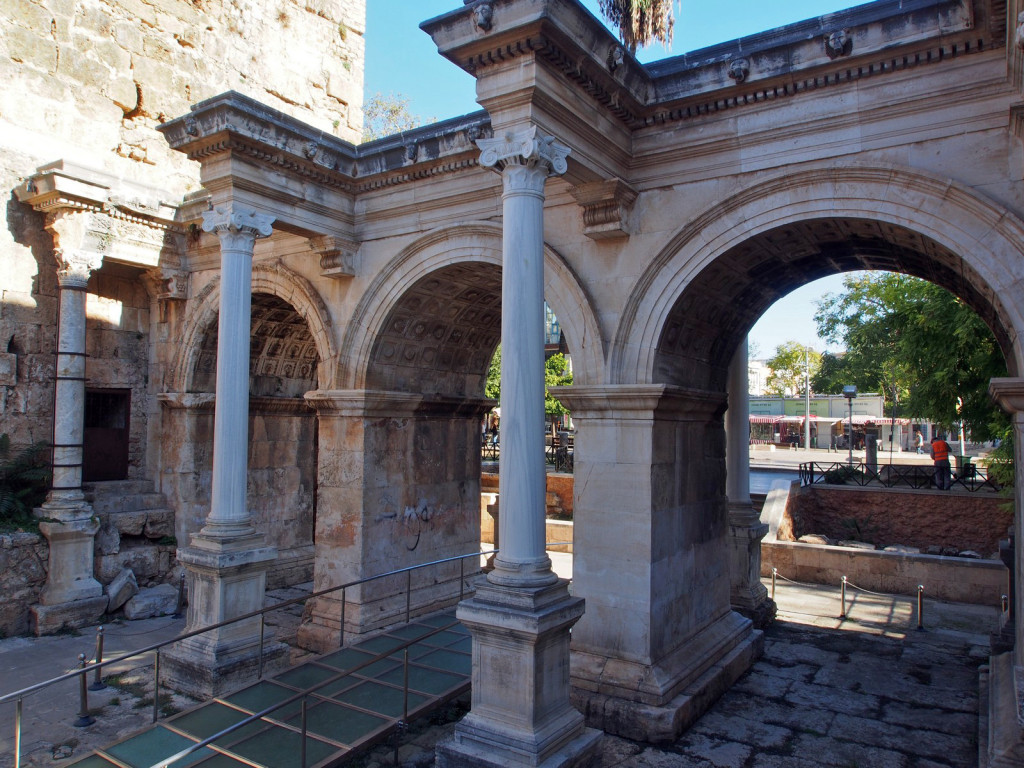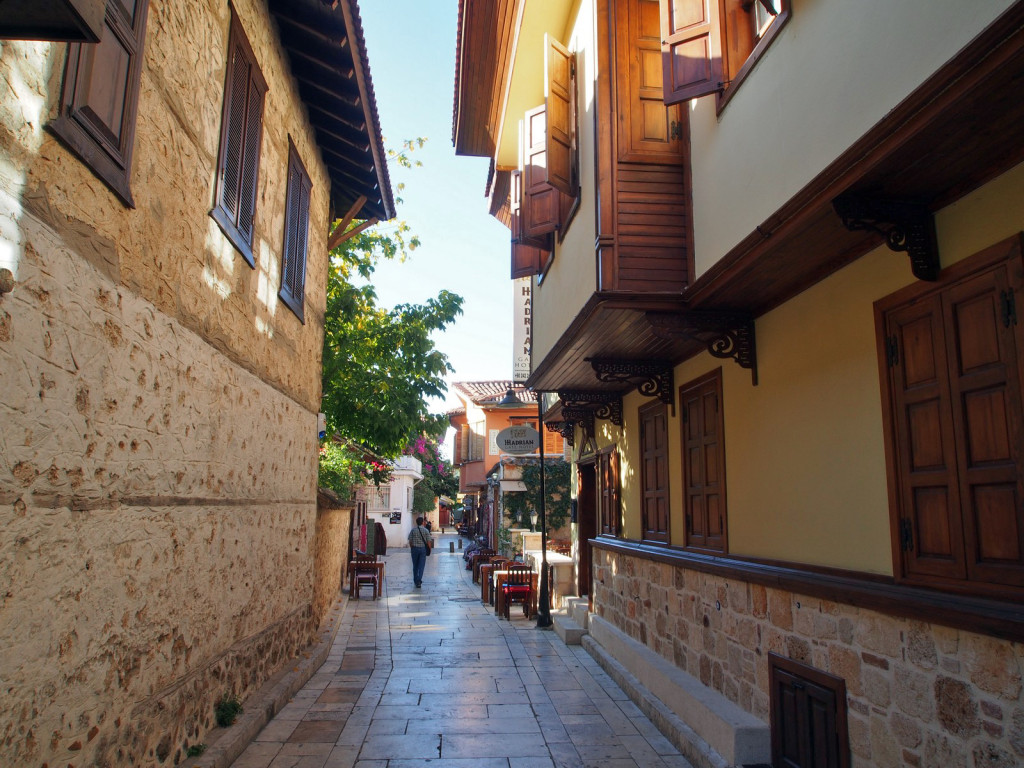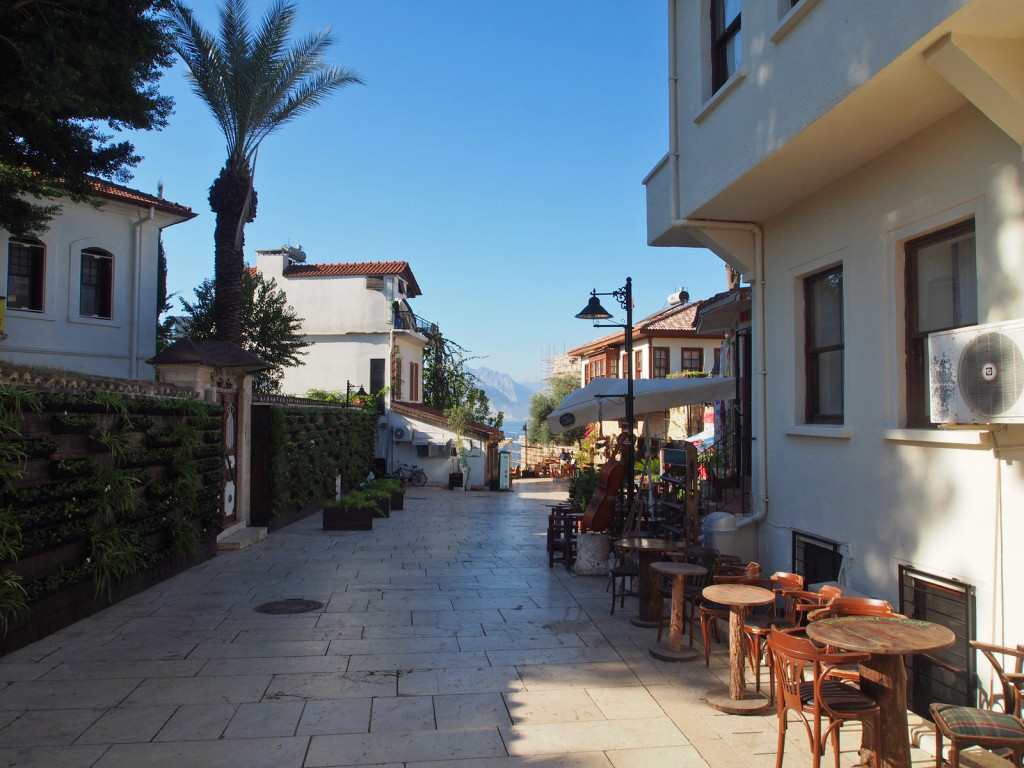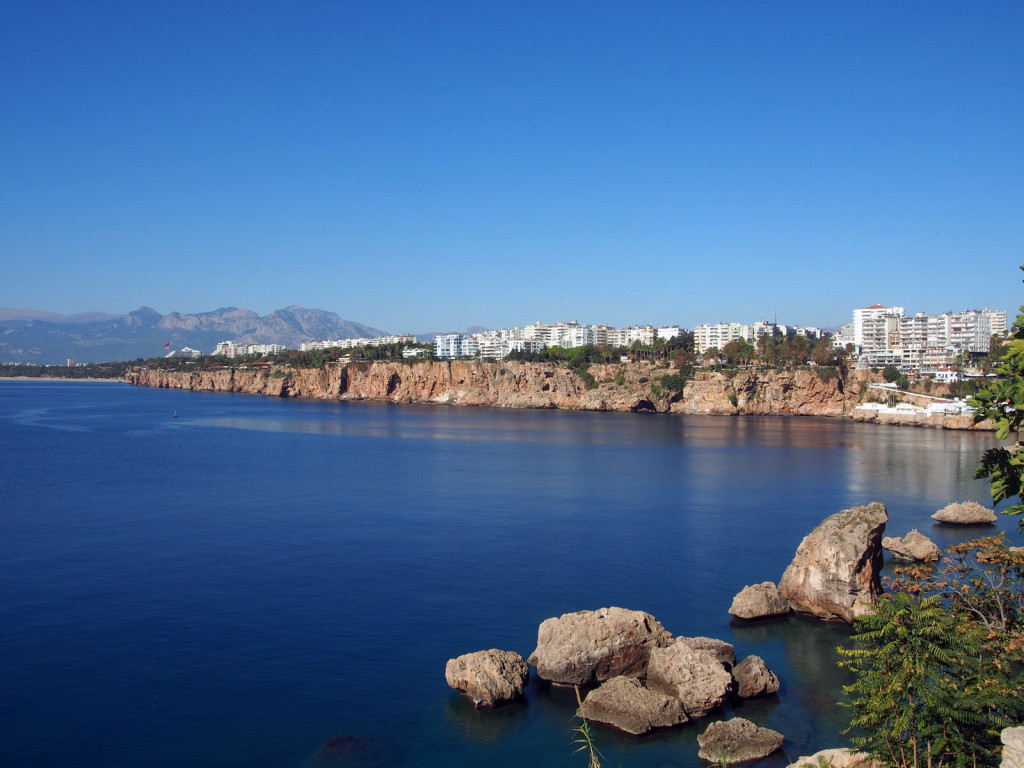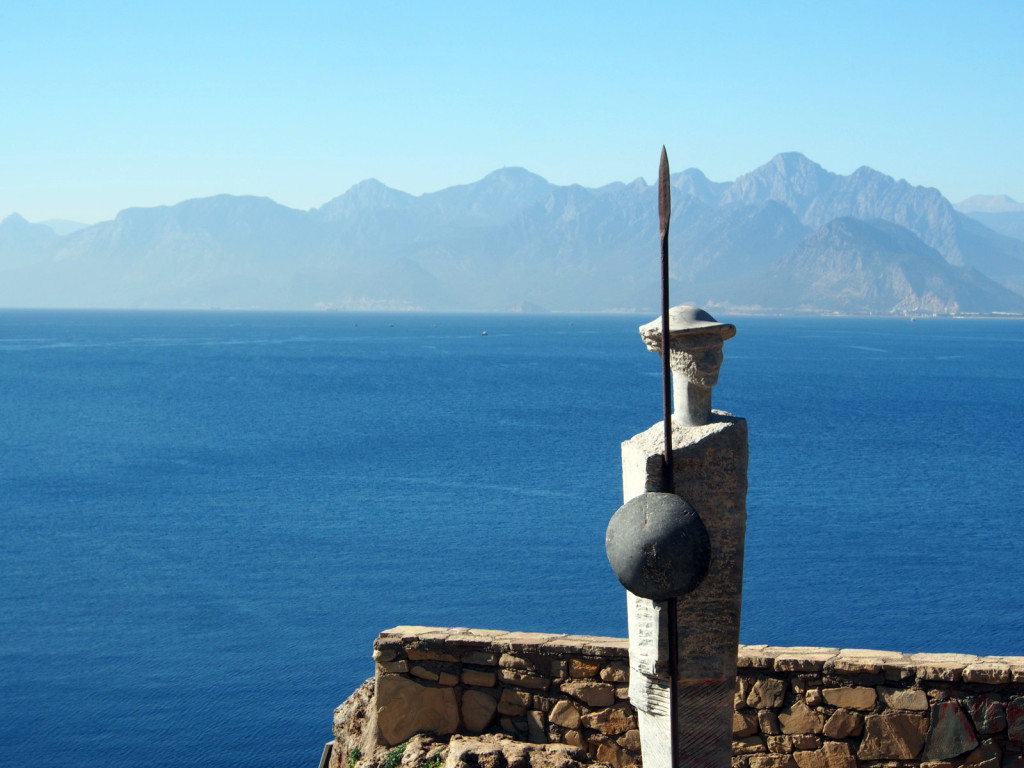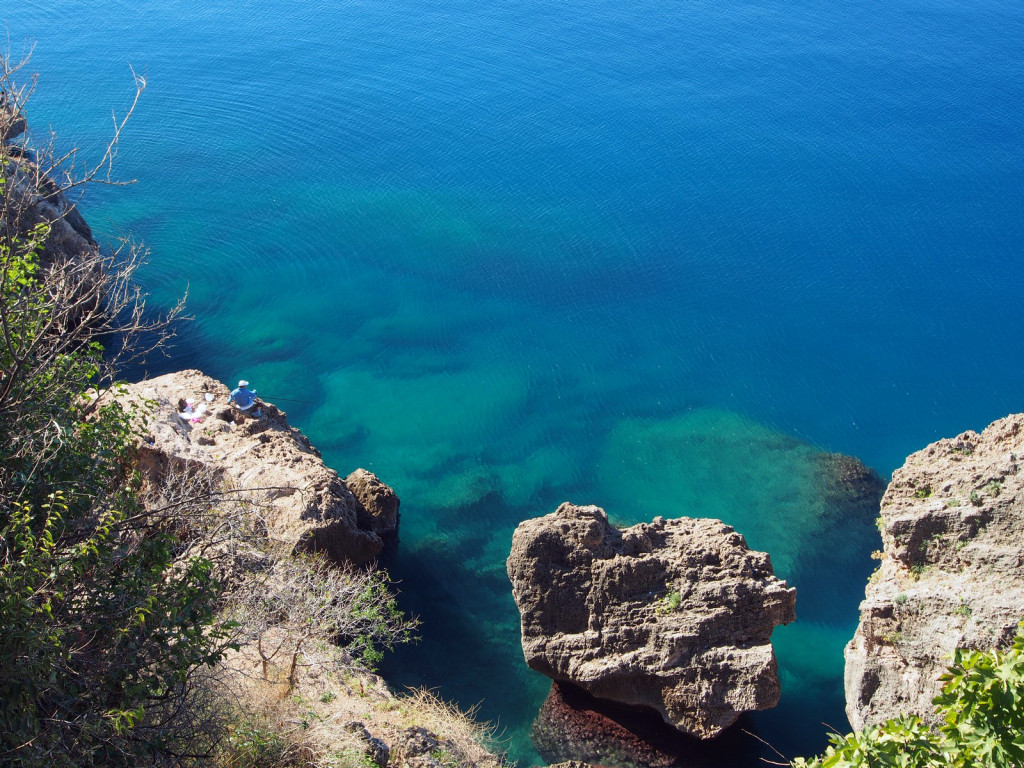Although the winter chills had eased as we pushed west, it was still too cold for our liking. We followed in the footsteps of rich Europeans everywhere, by heading south to the Mediterranean Sea. Along the way, we passed through the town of Konya, known as the home to the Mevlevi Order, better known to foreigners as the whirling dervishes.
The main building here is actually the mausoleum of the order’s founder, Jalal ad-Din Muhammed Rumi, while the outbuildings served as the lodge for the local chapter of the order.
Inside are relatively plain white walls, but ornamented with artefacts and calligraphy. The sarcophagi of Rumi and his son lie under the green dome, surrounded by smaller sarcophagi of other notable dervishes. Each sarcophagus is topped by the large, tall hat/turban members of the order wear.
The other side of the building houses the still-active mosque and a collection of ancient Qurans.
Leaving Konya, the air started to get warmer as we crossed a low, thickly forested mountain range – and some fun curves to let the bikes stretch their legs a little. Finally, off in the distance, we could see the sea – the first major body of water we’ve seen in six months (since leaving Thailand).
Along this stretch of coastline, all the way up to Istanbul, there are huge amounts of historic ruins – more Greek ruins than Greece, more Roman ruins than Italy. The first ancient town we found, just east of Antalya was Aspendos. An important centre of trade, it fell under Persian then Greek hegemony then back between the 6th and 3rd Centuries BC, before being absorbed into the Roman Empire in 190BC. Its greatest architectural remnant is the amphitheatre, one of the best preserved in the world.
The amphitheatre is set back into the hillside, with the rest of the town perched on top, glowing in the late afternoon sun.
We were arriving into Antalya at almost exactly the same time as many international leaders for the G20 summit. Hundreds of police cars and bikes were zooming around, and we emerged back into the car park to find it full of police bikes. A few plain-clothes police asked to see our passports and a few simple questions, ending with, “How do you feel about Greenpeace?” to which I really didn’t have an answer. Satisfied we weren’t there to protest or cause trouble, they let us continue on to Antalya.
Antalya is a relatively recent city in Turkish terms, having been founded in the second century BC, but grew to surpass other towns in the region over a long and prosperous history in Roman, Seljuk, Byzantine, and finally Ottoman empires. The historic heart of the town is guarded by walls and Hadrian’s gate.
Inside is a winding maze of one-way streets and pedestrian alleys – but very clean and gentrified, since tourism is by far the biggest contributor to the economy here.
The view over the Mediterranean coastline is gorgeous, making you itch to explore it – so we packed up the bikes and hit the road, heading west.

